
Edmond Valin's 'Rat Trap' articles
Toronto-based Edmond Valin uses publicly available information, including declassified files of the U.S. Federal Bureau of Investigation, to track down the identities of La Cosa Nostra informants officially referred to only by code numbers or codenames. Contact Edmond Valin by email through mafiarattrap @ gmail.com. Follow Rat Trap on Twitter: @mafia_rat.
Recommended Links
Chicago Outfit
Extortionist 'Jukebox Smitty' informed
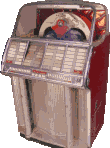
(January 2021)
Coin-operated jukeboxes were an attractive racketeering opportunity. In an earlier era, the machines could be found in every bar, eatery and pool hall in the country, allowing patrons to play favorite tunes from a collection of record discs for as little as a dime. The coins added up to a great many dollars, split evenly between jukebox vendors and owners of hosting businesses. In Chicago alone, more than a hundred commercial jukebox vendors operated more than 10,000 machines during the 1950s. As a lucrative, cash-only business, the venture naturally attracted organized crime.
Chicago Outfit
Dancer Tura Satana betrayed Gus Alex

Satana
(November 2020)
Tura Satana first earned attention for a 'tassel act,' involving acrobatic and martial arts movements, featured on the burlesque circuit of the 1950s. Later in life, Satana was open with interviewers as she reflected on many aspects of her personal life. She acknowledged posing nude for screen legend Harold Lloyd, bragged of a romantic relationship with crooner Frank Sinatra and claimed she once turned down a proposal of marriage from Elvis Presley. However, she forever kept secret one other relationship - her involvement with the Federal Bureau of Investigation as a spy against the Mafia.
Philadelphia Mafia
Two inducted members gave feds info on Mob

Riccobene
(December 2017)
Two inducted members of the Philadelphia Mafia, both sons of prominent Prohibition-Era mobsters, were revealing underworld secrets to the Federal Bureau of Investigation by the early 1960s. The member-informants provided federal agents with an inside look at the history, structure and membership of the Philadelphia-based organized crime family back to its earliest days. One of the informants went all in, turning against everyone he knew in the organization. The other stopped short of giving information that could be used to prosecute his associates.
NY: Banana War informant
Did Bonanno's son cooperate with FBI?
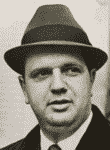
Bill Bonanno
(November 2017)
Salvatore “Bill” Bonanno's quick rise to the position of consigliere in the Bonanno Crime Family (commanded by his father, Joseph Bonanno), divided the membership and led to gangland conflict that the press referred to as the “Banana War.” The conflict restructured relationships among New York's five Mafia families and caused the fall of the last lingering city boss from the Commission-creation era. The FBI learned of every development through a secret high-level source, who named members, shared racket information and told of the events in the "Banana War."
Chicago Outfit
Windy City informants rose after Giancana
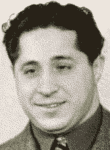
Fratto
(September 2017)
For many years, the FBI had little luck securing an informant from among the Chicago Outfit membership. However, declassified documents show that more than ten members began to "talk" to federal agents soon after Sam Giancana was deposed as boss and fled Chicago. The increase, from virtually no high-value informants in 1965, resulted from a more aggressive law enforcement approach and serious underworld turmoil following a succession of successful prosecutions against Outfit bosses. The FBI attempted to hide the identities of the mobsters who flipped by using informant symbol codes.
San Francisco Mafia
Former boss became informant for feds

Lima
(April 2018)
Anthony Lima, the former boss of the San Francisco Crime Family, began sharing confidential information with federal agents in 1965. He provided the FBI with a unique insider's view of organized crime from the highest levels. Lima shared information about his Mafia induction ceremony, provided details about the history of the Mafia organization in Pittsburgh, Pennsylvania, and identified La Cosa Nostra members in Pittsburgh and northern California. In doing so, he helped to shape the Bureau's organized crime investigations across the United States.
Roemer's Men in the Outfit I
'Sporting Goods' and 'Romano'
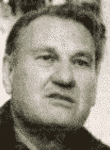
Roemer
(August 2017)
FBI Agent William Roemer revealed that one of his three best Outfit informants was Richard Cain. He referred to the other two only by codenames, "Sporting Goods” and “Romano.” But who were "Sporting Goods" and "Romano"? Roemer left interesting clues in the books about the Outfit he authored after his retirement from a long career with the Bureau. These clues, combined with declassified FBI reports, help us to finally discern the identities of the remaining key informants and to put to rest this puzzling issue.
Roemer's Men in the Outfit II
Intel provided by Ralph Pierce
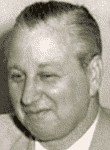
Pierce
(June 2018)
A longtime member of the Chicago Outfit, Ralph Pierce controlled gambling activities on the South Side and for decades was considered one of the top half-dozen leaders of organized crime in the Windy City. He also happened to be the FBI's most productive confidential informant within the Outfit during the period of the 1970s. He met privately with Agent William Roemer, supplying information on Sam Giancana's falling out with other gangland leaders and helping define the role of top-non-Italian rackets leader Gus Alex.
Pittsburgh Mafia
Retired big shot aided law enforcement
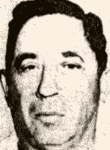
Mannarino
(March 2018)
Samuel Mannarino, a gambling chief in the New Kensington community northeast of Pittsburgh, was for many years a prominent leader in western Pennsylvania's crime family. In 1958, the Pittsburgh Mafia leadership forced him into retirement from the rackets. A degree of bitterness over this move caused Mannarino to meet with federal agents throughout the mid-1960s. While his vague revelations to the agents never fueled prosecutions of his former underworld associates, Mannarino revealed his own criminal past and the history of the Pittsburgh organization.
San Jose Mafia
Bay-Area informants proved crucial for FBI
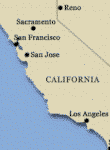
(February 2018)
As the Federal Bureau of Investigation was just beginning to enter the fight against a national crime syndicate, it benefited from membership data and historical perspective provided by confidential informants inside a small Mafia family in northern California. Three important informants began talking to federal agents as a result of a long conflict over a contracted "hit" that was called off but not paid off. Briefly in the 1960s, there may have been more member-informants active in the community of San Jose than any other U.S. crime family.
Chicago Outfit
'Lefty' Rosenthal was high-level source
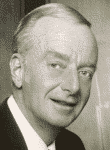
Rosenthal
(August 2018)
Frank "Lefty" Rosenthal, the Outfit gambling wiz made famous through the character Sam "Ace" Rothstein in the movie Casino, fed information about organized crime activities and mob hits to the FBI under the codename, "Achilles." He spoke with agents about the murder of Johnny Rosselli and other killings. The full extent of Rosenthal's cooperation has remained a mystery, but newly released FBI documents show for the first time some of the information he shared with federal agents.
Chicago Outfit
Giancana's buddy, Blasi aided the FBI
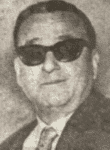
Blasi
(August 2018)
Dominic "Butch" Blasi served as appointment secretary for three bosses of the Chicago Outfit, extending back to the 1950s. A close associate of Sam Giancana, he was with the former boss on the night Giancana was killed. Blasi became the prime suspect in the murder investigation. Secretly, Blasi was an informant for the Federal Bureau of Investigation (but apparently never spoke to agents about the killing of his old friend). While much of Blasi's FBI informant file remains classified, significant portions recently have become available.
Hoover's FBI
How 'Mafia' became 'La Cosa Nostra'
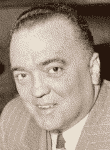
Hoover
(September 2018)
Federal Bureau of Investigation surveillance and intelligence obtained through several early-1960s underworld informants (including a mysterious Profaci Crime Family associate whose cooperation actually predated Valachi's) triggered an evolution in federal law enforcement terminology. The sources indicated that some mobsters referred to their organization by a previously unknown name. The old term for traditional Italian organized crime, "Mafia," was eventually discarded within the Bureau in favor of the new name, "La Cosa Nostra."
New England Mafia
Teresa cooperated much earlier than he let on
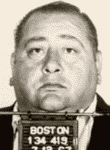
Teresa
(October 2018)
Vincent "Fat Vinnie" Teresa gained fame in the 1970s as a cooperating witness against the mob (and as author of tell-all memoirs). The former New England Crime Family member was a government witness at more than a dozen trials of gangland figures, and he made a televised appearance before a United States Senate committee investigating organized crime. As he became well known, Teresa insisted that he had followed the mob's code of silence until 1970. However, documentation shows he was supplying information to federal agents as early as 1962.
Los Angeles Mafia
Piscopo: betrayer of Johnny Roselli
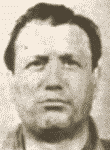
Piscopo
(December 2018)
As a longtime Los Angeles Mafioso, Salvatore Piscopo was a close associate of underworld legends Johnny Rosselli and Jimmy "the Weasel" Fratianno. Piscopo, never rose higher than solder in the mob, but he ran a large-scale gambling operation. He also had a front-row seat to Mafia infiltration of the motion picture industry and to the gangland conflicts that boiled over in Southern California in the 1940s and 1950s. Fratianno labeled Piscopo as the man who told the FBI about Rosselli's secret identity. But that was just part of what Piscopo revealed.
Kansas City Mafia
'Joey G' drops a dime and a body or two
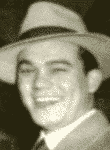
Gurera
(November 2019)
Joseph Gurera, descended from Sicilian-American mobsters, began to share underworld secrets with the Federal Bureau of Investigation in 1967. By that time, Gurera had an extensive underworld résumé. He had been a member of the Kansas City and Milwaukee crime families and held information on numerous mob murders. Gurera cooperated for only a few months before dying of natural causes. In that short time, he supplied identifications of La Cosa Nostra members in three states, provided underworld histories for the organizations in Kansas City and Milwaukee and solved gangland slayings.
NY: Gambino
Two informants had very different fates

Santantonio
(Jan. 2018, Feb. 2022)
Two members of the Gambino Crime Family in New York divulged organization secrets to the FBI during the same period. One of these informants, Alfredo Santantonio, was suspected of cooperating with investigators and was murdered in the summer of 1963. The other, Carmine Lombardozzi, had been a top capodecina in the organization, before heightened law enforcement attention resulted in his demotion. Unlike Santantonio, Lombardozzi lived to age 79. Crime family leaders, unaware of his cooperation, attended his wake in 1992.
Chicago Outfit
Stone Park: home to early FBI informants

Pranno
(April 2020)
In the middle of the last century, the community of Stone Park, Illinois, was known as a haven for vice criminals. It also happened to be a productive source of confidential underworld informants for the Federal Bureau of Investigation. Two Outfit members, both Stone Park-area residents, aided federal agents. One was an obscure mobster who occupied positions on both sides of the law. The other was a prominent gangster known for the ruthless rule of his territory. The two were friends and underworld associates, but that did not stop them from telling on each other."
Bonannos in Florida
'Willie the Tile Maker' surrendered secrets
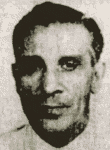
Dara
(January 2018)
The Federal Bureau of Investigation learned about Cosa Nostra membership, gangland murders and internal Bonanno Crime Family turmoil through the secret cooperation of a Bonanno soldier based in the area of Miami, Florida. Clues found in declassified FBI documents reveal that William "Willie the Tile Maker" Dara was the informant. A native of Sicily, Dara had become a Bonanno member in Brooklyn around 1950 before relocating to Florida. Dara's cooperation with the FBI was never suspected by his underworld colleagues. He died as a crime family member in good standing.
Northeast Pennsylvania
In Pittston, informing runs in the family
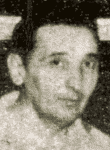
LaTorre
(June 2020)
In 1951, thirty-eight-year-old Joseph LaTorre began to secretly share with law enforcement authorities information about an organized crime fraternity he referred to as the "Organization." The eldest son of former Pittston, Pennsylvania, Crime Family boss Steven LaTorre, Joseph's revelations occurred years before the Apalachin, New York, Mafia convention and a decade before Joe Valachi began his publicized cooperation with federal agents. Joseph and his brother Samuel, neither of whom were inducted Mafia members, both fed the FBI information they learned from their father.
Chicago Outfit
The Italian mobster who actually wasn't
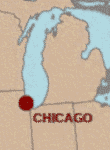
(October 2020)
In 1963, a Chicago Outfit member got in trouble with law enforcement and sought to help himself by secretly providing information on his underworld colleagues, including Fifi Buccieri, Ralph Pierce, Frank Nitti and Paul Ricca. He became the Outfit's first significant turncoat in the post-Valachi era. Theodore Jack DeRose, led a double-life as a mobster and a federal informant, but he may have been accustomed to such deception. For years, he had been concealing his Jewish ancestry in order to get ahead in the underworld by posing as an Italian-American Mafioso from New York.
Chicago Outfit
The politician, the singer and the Mob
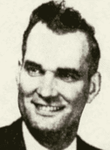
Vydra
(April 2021)
A businessman and local politician in the Chicago suburb of Berwyn, Illinois, George Vydra became obsessed with local night club singer Jane Darwyn. Believing he could win her by aiding her career, Vydra reached out friend Sam English, connected with the Chicago Outfit. Vydra invested in suitable venues for the singer and traveled to build a recording or acting career for her. Darwyn's career fizzled. Vydra lost a fortune before he accepted the hopelessness of his situation. On the final day of his life, he penned a note indicating that the FBI already knew his story.
Chicago Outfit
Car-bomb correction for Outfit mistake
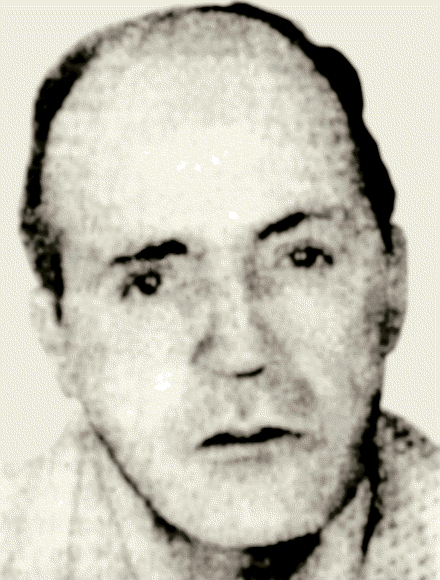
Bombacino
(May 2021)
Louis Bombacino, a minor Windy City racketeer frequently in trouble with the law, provided insider information to the FBI on late-1960s era Outfit leaders. He also testified in federal court against John and James Cerone, Joseph Ferriola, Donald Angelini and Frank Aureli during a successful 1970 interstate gambling case that brought aging crime boss Paul Ricca to the witness stand. A new identity and a relocation to distant Arizona wasn't enough to protect him from the vengeance of Mob bosses. Bombacino's life ended in an October 1975 car-bombing outside of his home.
Kansas City Mafia
Mobster's son guided federal agents
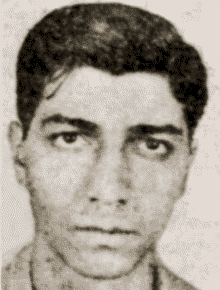
Crapisi
(November 2021)
A fall 1960 shotgun attack by local hoodlums wounded but did not deter FBI informant Joseph Crapisi. The son of a Kansas City mobster who died in prison following a narcotics conviction, Crapisi continued to provide federal agents with an early view of KC Mafia structure and membership and later added information about mafiosi in the San Francisco, California, area. He spoke of KC boss Nicholas Civella and underworld elder statesmen Joseph Cusumano and Joseph Filardo. His structural revelations confirmed those of informant Joseph Valachi, though he used different terminology.
Pittsburgh Mafia
Zeid murder followed his mob betrayal
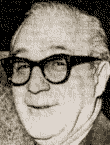
Zeid
(January 2022)
Abraham Zeid was a longtime racketeer in western Pennsylvania and northeastern Ohio. He experienced a falling out with regional Mafia leaders, including brothers Gabriel "Kelly" and Sam Mannarino. Zeid then decided to reach out to federal investigators through his friend, the shadowy Joseph Merola, and he began providing the FBI with information about mob bosses and businesses in the area. Shortly after becoming an informer, Zeid became a corpse. In summer 1965, his lifeless body showing evidence of torture was deposited by his killers on property owned by his defense attorney.
Chicago Outfit
Restaurateur served Mob secrets to FBI
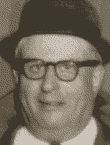
Liebling
(March 2022)
In January 1961, debt collector William "Action" Jackson stepped over a line when he attempted to coerce payments from Outfit associate Bernard Liebling by threatening Liebling's wife and child with physical harm. The Chicago restaurant owner responded by secretly contacting the FBI and providing detailed information on Outfit personnel and rackets. While his information on Outfit leadership contained inaccuracies, Liebling was an early source documenting the involvement of Windy City underworld figures in legitimate business enterprises.
Los Angeles Mafia
SoCal mobster 'Johnny Bat' was a rat
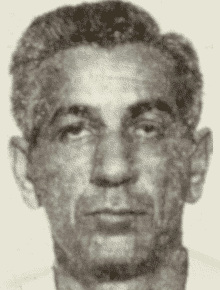
Battaglia
(November 2022)
A 1961 charge of domestic violence against southern California mobster John "Bat" Battaglia allowed the FBI to secure Battaglia's cooperation through a four and a half-year period. Battaglia, a Mafia associate, told federal agents about his brother, inducted Mafioso Charles Battaglia, and Charles' underworld colleagues in California, Arizona and New York. FBI learned about Los Angeles Crime Family boss Frank DeSimone, the aggressive expansion schemes of New York boss Joe Bonanno and the violent "Banana War" within the Bonanno Crime Family.
NY: Lucchese
Hoover's FBI ignored early informant
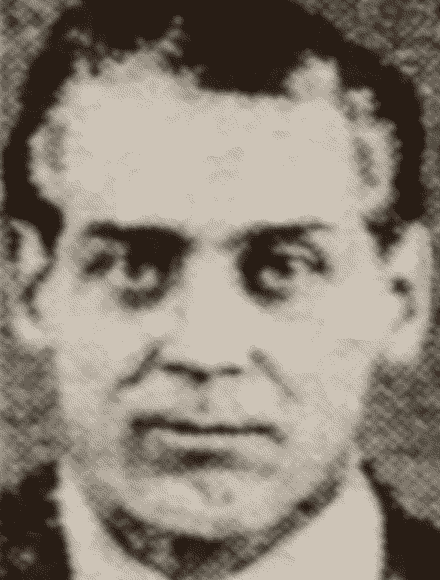
Isabella
(March 2023)
Under J. Edgar Hoover, who resisted the idea of a nationwide criminal network, the FBI ignored and shut down an early informant with knowledge of linked Mafia groups in major U.S. cities. FBI was embarrassed about a year later when mafiosi from across the U.S. were found meeting at Apalachin, New York. In the 1960s, Special Agent Anthony Villano located and reactivated the early informant and later wrote about him in a book, giving him the alias "Rico Conte." Combining Villano's descriptions with declassified FBI files, the true identity of the early informant is revealed.